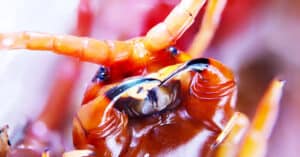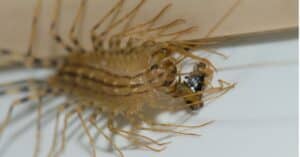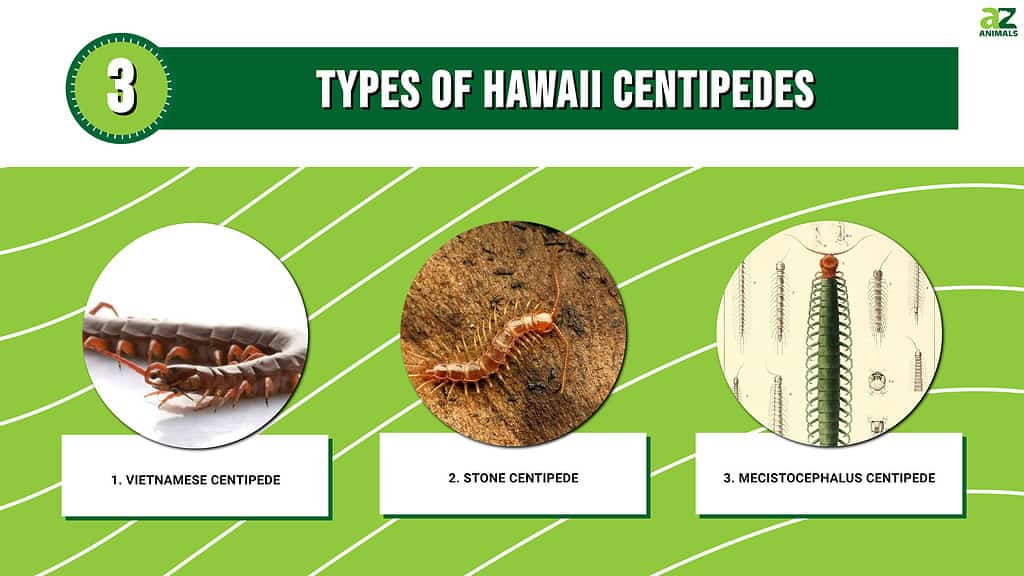
When you think about household pests, you may think of spiders, mice, cockroaches, or scorpions, depending on where you live. In Hawaii, you may walk into your bathroom to find an 8-inch centipede clinging to the wall! There are three main kinds of centipedes in Hawaii – the Vietnamese Centipede (Scolopendra), Stone Centipedes (Lithobius), and Mecistocephalus. Let’s take a look at some of these Hawaii centipedes!
What is a Vietnamese Centipede (Scolopendra)?
Vietnamese centipedes are large centipedes that can get to be 8 inches long. Most are 4-10 inches and about an inch wide. Centipedes have a flat bodies, not tubular like a worm. Their bodies are segmented with each segment having a set of legs on either side. Although the term “centipede” refers to 100 legs, the range can be from 15-177 pairs of legs (that is 30-354 legs total). The Vietnamese centipede has 22 pairs (44 legs altogether) and can move quite fast. They have a variety of colorations that include dark brown bodies with yellow legs to yellowish-brown bodies with orange legs. There are long antennae on their heads and their front legs are actually sharp claws that can inject their prey with venom!
Where Do Vietnamese Centipedes Live?
Besides Vietnam and Hawaii, you can find Vietnamese Centipedes in Japan, Brazil, and Australia. They prefer a sub-tropical climate and can burrow underground when it gets too hot out to stay cool. These centipedes tend to stay out of sight preferring warm damp areas like under rocks, woodpiles, and mulch. Although they occasionally will find themselves in residential areas, it is not common to find them inside homes.
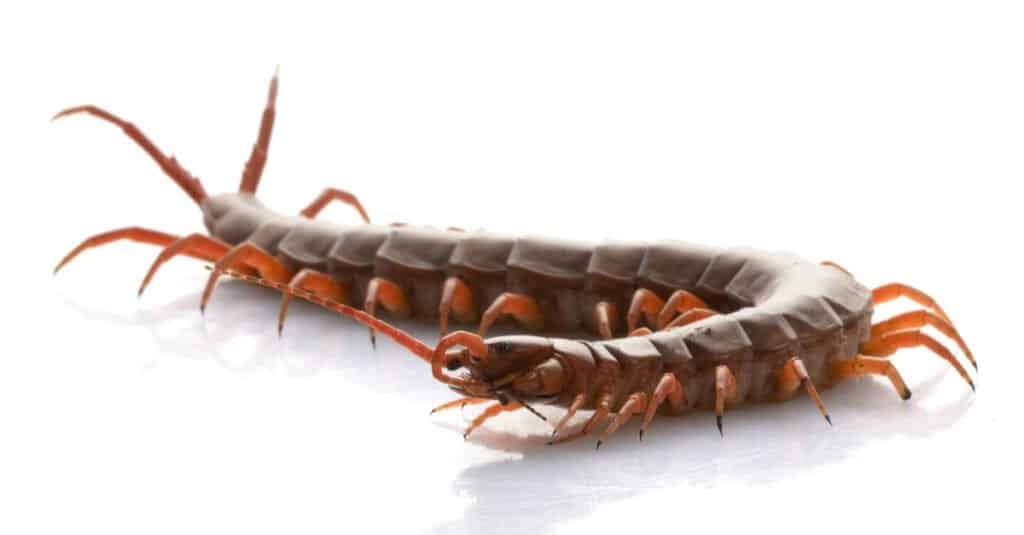
Invasive species are most frequently introduced to a new environment by human error.
©fivespots/Shutterstock.com
How Did Vietnamese Centipedes Get to Hawaii from Vietnam?
The Vietnam centipede has spread to a number of countries and it probably was introduced to Hawaii accidentally. Invasive species are most frequently introduced to a new environment by human error. It could have come over on a shipping container or in someone’s luggage. As an island with a delicate ecosystem, it is even more important to keep the balance of plants and animals in check. Hawaii’s tropical climate is similar to the native habitat of these centipedes, which means they are probably here to stay. This is why they are now a Hawaiian centipedes.
Are Vietnamese Centipedes Poisonous?
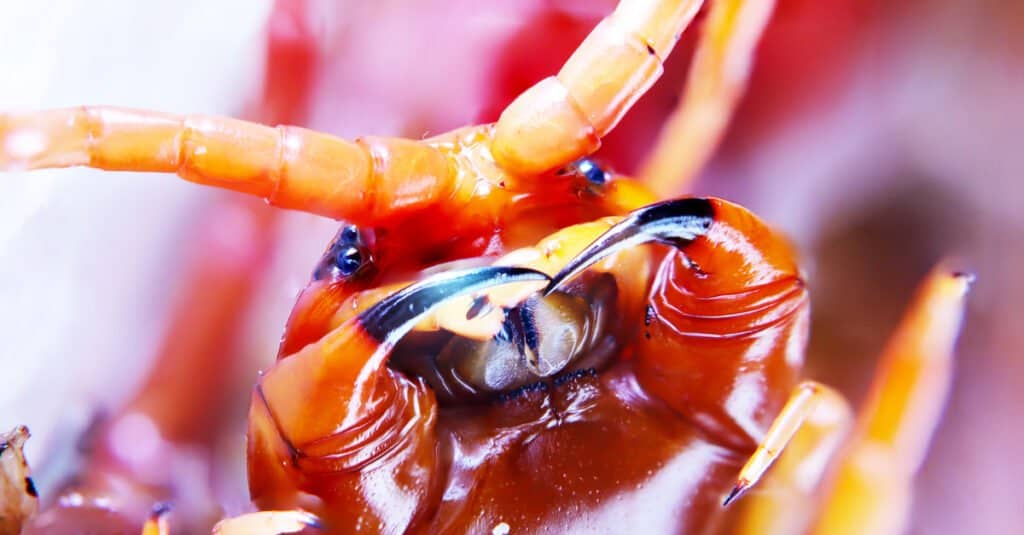
The Vietnamese centipede is harmful to humans. Their bites are painful and can make people feel sick.
©SAYAN CHAONAMON/Shutterstock.com
Of all the centipedes in Hawaii, the Vietnamese (or Large) centipede is the most trouble because they bite. Their bites are very painful and are venomous – they can cause swelling, pain, fever, chills, and nausea. Although painful, the bites are rarely fatal (only if someone was allergic to the venom). You should seek medical attention if you have any reaction. Having your home sealed appropriately and not having any warm moist places in your home will keep these Hawaiian centepede pests from moving in. If you do come across one in your home or yard, remember not to pick them up. All of their tiny legs have sharp points that can puncture your skin.
What Do Vietnamese Centipedes Eat?
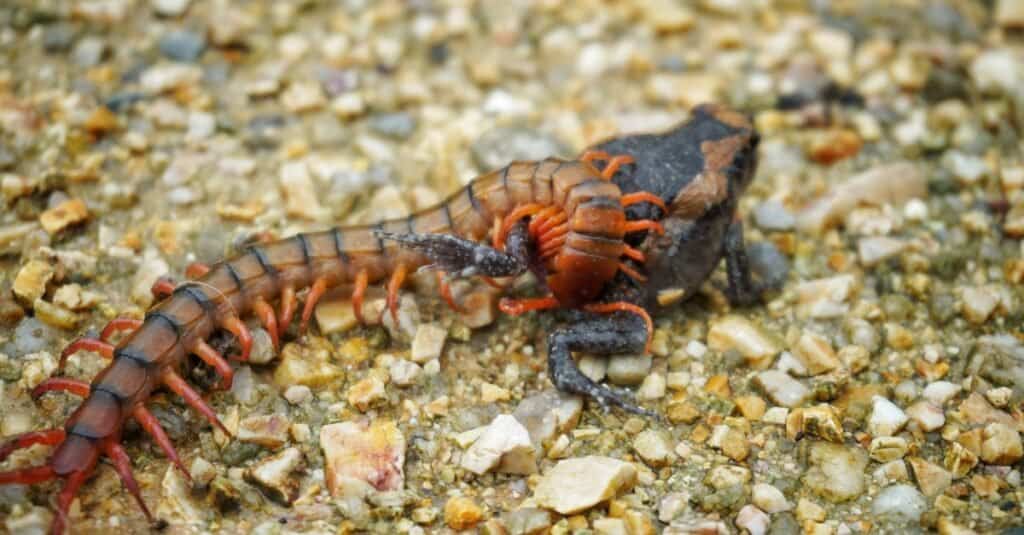
Centipedes inject their prey with venom that subdues them before they are eaten.
©WITSANU PORNSUKNIMITKUL/Shutterstock.com
Vietnamese centipedes are carnivores that eat frogs, spiders, scorpions, insects, and even small rodents. They are nocturnal animals that hunt at night. When they find a small mouse, for example, they quickly wrap their body around it, like a snake, jabbing all of their sharp legs into its body. They then use their front claws to inject it with venom to stun it and wait for it to die.
What are Stone Centipedes (Lethobius)?
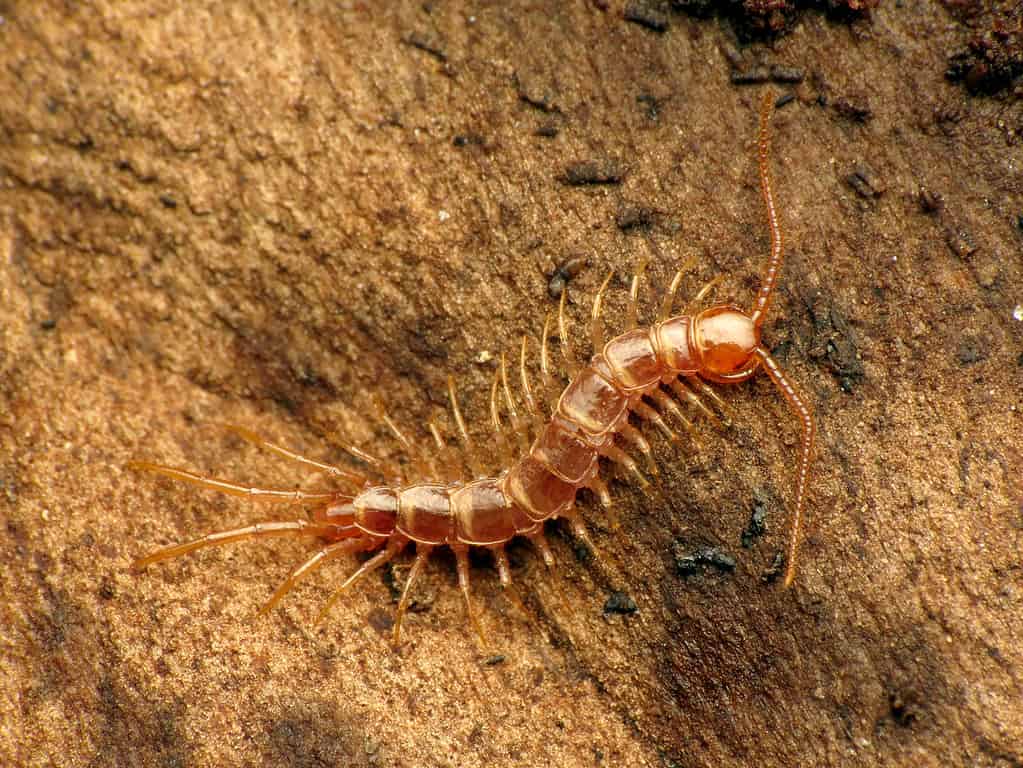
©Katja Schulz / CC BY – License
Stone centipedes are much smaller than Vietnamese centipedes at only 1.5 inches. These Hawaiian centipedes are similar to a common house centipede that is all brown to maroon and has rows of tiny legs. Stone centipedes have 15 pairs of legs (30 total) with their front legs being claws. Although they use these claws to capture and stun prey, the claws are not large enough to harm humans. They hide under rocks, logs, leaves and prefer warm damp climates.
What is the Hawaii Centipede Mecistocephalus Like?
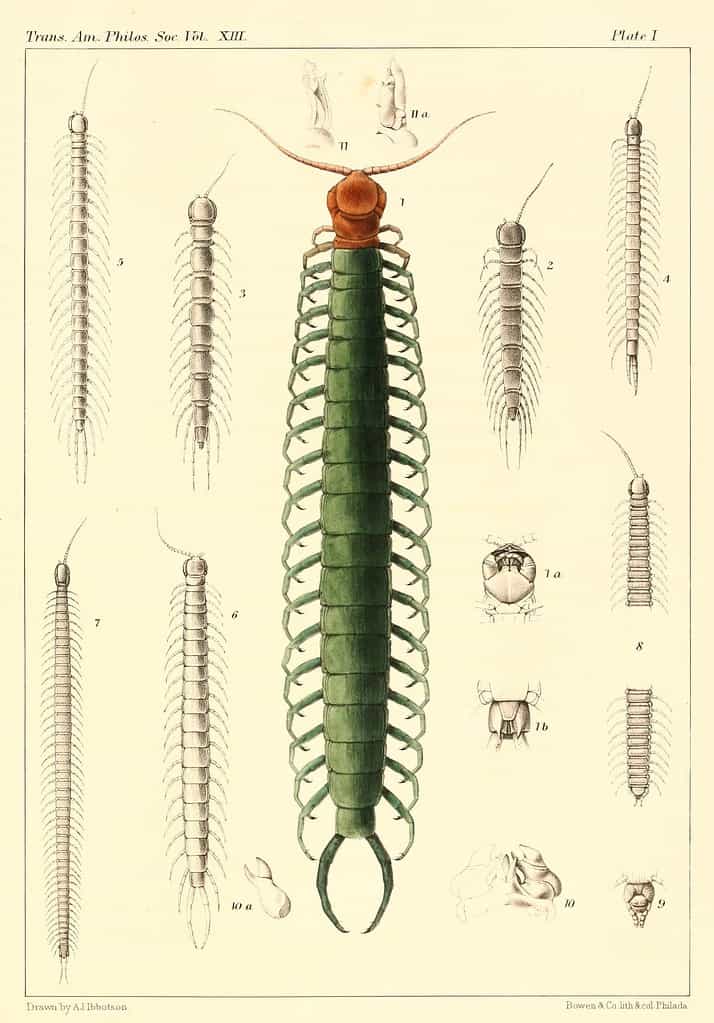
Centipedes like this may have come over on shipping containers.
©A.J. Ibbotson, H.C Wood, Jr. / Public Domain – License
Mecistocephalus centipedes are native to Sri Lanka and India but have made their way to Hawaii. They are a harmless centipede that has 57-59 pairs of legs (114-118 legs total). Their bodies are yellow with a redhead – the heads are more elongated than Stone centipedes. This Hawaiian centipede also prefers to hide under things in warm, damp areas like piles of wet leaves and brush. Centipedes like this may have come over on shipping containers as adults or as a cluster of eggs that may have been deposited in soil that came over.
What happens when you cut a Hawaii Centipede in half?

Earthworms can regenerate their tails if they are cut off, but centipedes can’t.
©iStock.com/Andreas Häuslbetz
If you accidentally cut a Hawaii centipede in half and see that both halves are now wriggling about, do not be concerned that you have now doubled your problem. Both halves may be moving for a bit but they will eventually die. Earthworms can be cut in half and regenerate their tail, but centipedes can’t do this, they will die if cut in half. They can survive if they lose a leg or two (they have a lot to spare). Centipedes can regrow legs! Crazy but handy if you are a centipede!
How Big is the Largest Centipede in the World?
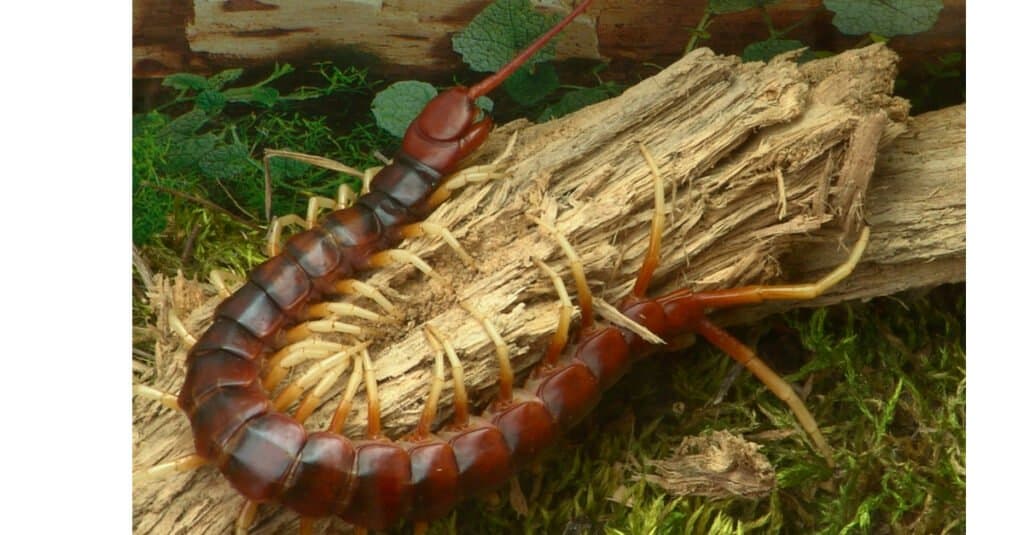
The Peruvian giant yellow-leg centipede is the largest centipede in the world.
©skifbook/Shutterstock.com
The Guinness World Records has the largest centipede in the world listed at 26 cm (that is 10 inches long)! These are not Hawaii centipedes but are from Central and South America. The Scolopendra gigantean, also known as the Peruvian giant yellow-leg centipede, is the largest centipede in the world. These centipedes hang upside down in caves in countries like Venezuela and are big enough to take down bats! They are also venomous and can bite humans, causing a very painful bite and symptoms like swelling, nausea, and fever. Hopefully, these large venomous centipedes will not find their way to Hawaii!
Summary of the 3 Types of Hawaii Centipedes
Here’s a summary of the 3 types of Hawaii centipedes and some details about them:
| Centipede | Length | Number of Legs |
|---|---|---|
| Vietnamese Centipede | 4-10 inches | 22 pairs (44 legs) |
| Stone Centipede | 1.5 inches | 15 pairs (30 legs) |
| Mecistocephalus Centipede | 1-3 inches | 57-59 pairs (114-118 legs) |
The photo featured at the top of this post is © skifbook/Shutterstock.com
Thank you for reading! Have some feedback for us? Contact the AZ Animals editorial team.



